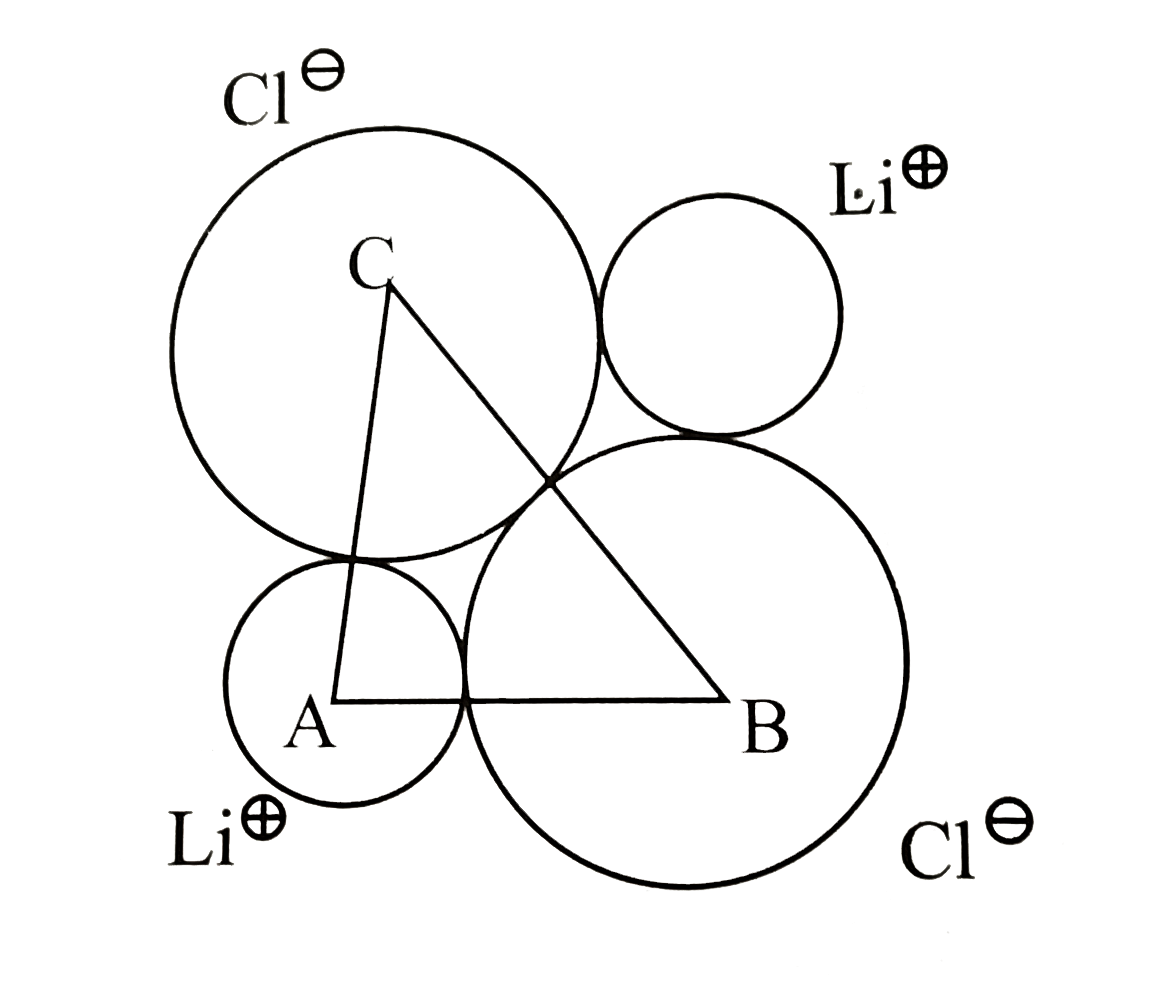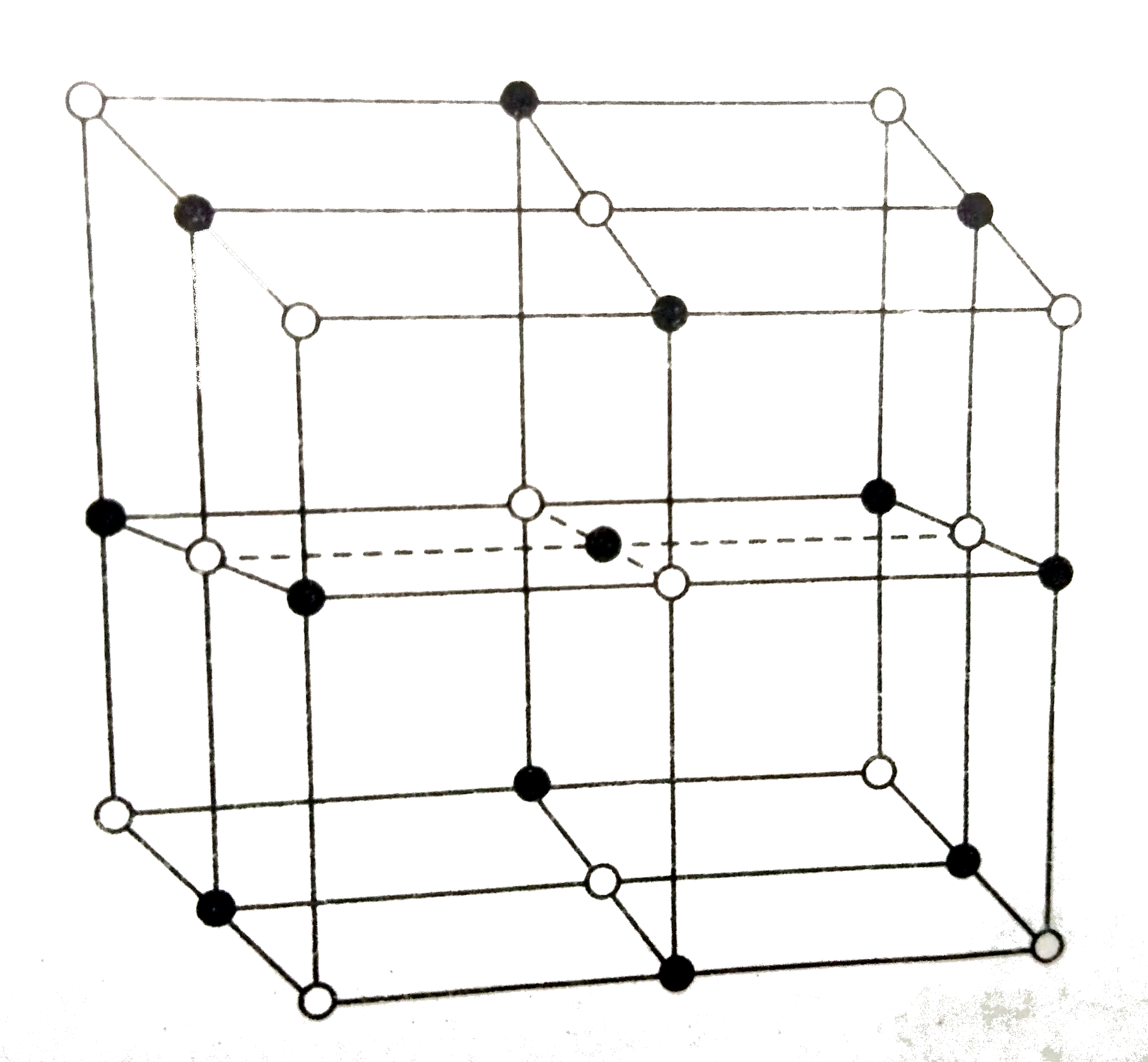Complete Solutions to Some Solved Examples of chapter STATES OF MATTER (SOLID STATE) of Class 11 book with complete answers and questions
| Class 11 | CHEMISTRY |
| Chapter | STATES OF MATTER (SOLID STATE) |
| OP TANDON | Some Solved Examples |
| Number Of Questions | 32 |
| Academic Year | 2023-24 |
A compound formed by elements `A` and `B` crystallises in a cubic structure where `A` atoms are present at the corners of a cube and the `B` atoms are present at the face centres.The formula of the compound is
View SolutionAt room temperature, sodium crystallized in a body`-`centred cubic lattrice with `a=4.24Å`. Calculate theoretical density of sodium `(` at wt. of`Na =23)`.
View SolutionThe density of `KCl` is `1.9893g cm^(-3)` and the length of a side unit cell is `6.29082Å` as determined by `X-`ray diffraction. Calculation the value of Avogadro's number.
View SolutionSilver crystallises in a face-centred cubic unit cell. The density of Ag is `10.5 g cm^(-3)` . Calculate the edge length of the unit cell.
View SolutionAn element has a bcc structure with a celledge of `288` pm. The density of the element is `7.2 g cm^(-3)`. How many atins are present in `208 g` of the element?
View SolutionLithium forms body centred cube structure .The length of the side of its unirt cell is 351 pm Atomic radius of the lithium will be
View SolutionAmmonium chloride crystallises in a body-centred cubic lattice with a unit distance of 387 pm. Calculate (a) the distance between oppositely charged ions in the lattice and (b) and radius of the `NH_(4)^(+)` ion of the radius of `Cl^(-)` ion is 181 pm.
View SolutionThe unit cube length for `LiCl` (`NaCl` structure) is `5.14 Å`. Assuming anion-anion contact, calculate the ionic radius for chloride ion.

View SolutionThe density of crystalline sodium chloride is `2.165 g cm^(-3)` . What is the edge length of the unit cell . What would be the dimensions of cube containing one mole of NaCl ?
View SolutionThe density of potassium bromide crystal is `2.75 g cm^(-3)` and the length of an edge of a unit cell is 654 pm. The unit cell of KBr is one of three types of cubic unit cells. How many formula units of KBr are there in a unit cell ? Does the unit cell have a NaCl or CsCl structure ?
View SolutionA unit of cell of sodium chloride has four formula units. The edge length of the unit cell is `0.564 nm`. What is the density of sodium chloride?
View SolutionChromium metal crystallizes with a body-centred cubic lattice. The length of the unit cell edge is found to be `287`pm. Calculate the atomic radius. What woulds be the density of chromium in `g cm^(-3)`?
View SolutionWhen heated above `916^(@)C`, iron changes its bcc crystalline from to fcc without the change in the radius of atom . The ratio of density of the crystal before heating and after heating is :
View SolutionX-rays of wavelength 1.54Ã… strike a crystal and are observed to be deflected at an angle of `22.5^(@)` . Assuming that n=1 , calculate the spacing between the planes of atoms that are responsible for this reflection.
View SolutionThe first order reflection of a beam of X-rays of wavelength 1.54 Ã… from the (100) face of a crystal of the simple cubic type occurs at an angle of `11.29^(@)` . Calculate the length of the unit cell.
View SolutionWhen an electron in an excited state of Mo atoms falls from L to K-shell , an X-ray is emitted. These X-rays are diffracted at angle of `7.75^(@)` by planes with a separation of `2.94 Ã…`. What is the difference in energy between k-shell and L-shell in Mo, assuming of first order diffraction ? ( `sin 7.75^(@)=0.1349`)
View SolutionThere is a collection of crystalline substances in a hexagonal closed packing. If the density of matter is `2.6 g//cm^(3)`, what would be the average density of matter in collection? What fraction of space is actually unoccupied ?
View SolutionThe unit cell length of NaCl is observed to be 0.5627 nm by X-ray diffraction studies , the measured density of NaCl is `2.164 g cm^(-3)`. Correlate the difference of observed and calculated densities and calculate % of missing `Na^(+)` and `Cl^(-)` ions.
View SolutionIn a closed packed structure of mixed oxides, the lattice is composed of mixed oxides ions. One-eighth of tetrahedral voids are occupied by divalent cation `(A^(2+))` while one-half of octahedral voids are occupied by trivalent cations `(B^(3+))`. The fromula of mixed oxide is
View SolutionAt `1425^(@)C` , Fe crystallises in a body-centred cubic lattice whose edge length is `2.93 Ã…` . Assuming the atoms to be packed spheres, calculate :
(a) the radius of the spheres,
(b) the distance between centres of neighbouring spheres,
(c) the number of atoms of Fe per unit lattice and
(d) the total volume occupied by an atom of Fe.
View SolutionAn element crystallizes in fcc lattice having edge length `400 pm` Calculate the maximum diameter of an atom which can be place in interstitial site without distorting the structure.
View SolutionThe distance between planes of ions parallel of the unit cell of sodium chloride is 282 pm. The smallest angle of reflection observed in the X-ray diffraction pattern is `5.97^(@)` . Calculate the wavelength of the incident radiation.
View SolutionCsCl has cubic structure of ions in which `Cs^(+)` ion is present in the body -centre of the cube. If density is 3.99 g `cm^(-3)` :
(a) Calculate the length of the edge of a unit cell.
(b) What is the distance between `Cs^(+)` and `Cl^(-)` ions ?
(c) What is the radius of `Cs^(+)` ion if the radius of `Cl^(-)` ion is 180 pm ?
View SolutionIf `NaCl` is doped with `10^(-3)` mol% of `SrCl_(2)`, what is the concentration of cation vacancies?
View SolutionA metal crystallizes into two cubic phases, face-centred cubic and body-centred cubic, which have unit cell lengths `3.5` and `3.0 A`, respectively. Calculate the ration of densities of fcc and bcc.
View SolutionA solid AB has the NaCl structure. If radius of the radius of the cation `A^(+)` is 120 pm, calculate the maximum value of the radius of anion `B^(-)`.
View SolutionYou are given marbles of diameter `10mm`. They are to be placed such that their centres are laying in a square bound by four lines each of length `40mm`. What will be the arrangements of marbles in a plane so that maximum number of marbles can be placed inside the area? Sketch the diagram and derive expression for the number of molecules per unit area.
View SolutionAn element crystallizes into a structure which may be describes by a cubic type of unit cell having one atom on each corner of the cube and two atoms on one of its diagonals. If the volume of this unit cell is `24xx10^(-24)cm^(3)` and density of element is `7.2g cm^(-3)` . Calculate the number of atoms present in `200g` of element.
View SolutionCalcium crystallises in a face `-` centred cubic unit cell with `a=556nm`. Calculate the density if it contained `0.1%` Vaccancy defects.
View SolutionCu metal crystallies in face centred cubic lattic with cell edge, a =361.6pm. What is the density of Cu crystal ? (Atomic mass of copper =63.5 amu, `N_(A)=6.023xx10^(23)`)
View Solution`r_(Na^(+))" and " r_(Cl^(-))` represent radius of `Na^(+)` and `Cl^(-)` ions respectively. If 'n' is the number of NaCl units per cell then give the eqution you will use to obtain molar volume.
View SolutionConsider an ionic solid MX with NaCl structure. Construct a new structure (Z) whose unit cell is constructed from the unit cell of MX following the sequential instructure given below. Neglect the charge balance.
(i) Remove all the anions (X) except the central one
(ii) Replace all the face-centred cations (M) by anions (X)
(iii) Remove all the corner cations (M)
(iv) Replace the central anion (X) with cation (M)
The value of `(("number of anions")/("number of cations"))` in Z is .............

View Solution
Some Solved Examples questions and complete solutions for chapter STATES OF MATTER (SOLID STATE) of G.R. BATHLA & SONS CHEMISTRY (HINGLISH) of Class 11
All Exercises from OP TANDON Class 11 CHEMISTRY STATES OF MATTER (SOLID STATE)
- Asertion-Reason type Questions
- Illustrations of Objective Questions
- Integer Answer Type Questions
- Linked Comprehension Type Questions
- Matrix Matching Type Questions
- OBJECTIVE QUESTIONS (LEVEL -A)
- Objective Questions (Level-B)
- Practice Problems
- SELF ASSESSMENT Section I
- SELF ASSESSMENT Section II
- SELF ASSESSMENT Section III
- SELF ASSESSMENT Section IV
- SELF ASSESSMENT Section V
- SELF ASSESSMENT Section VI
- Some Solved Examples